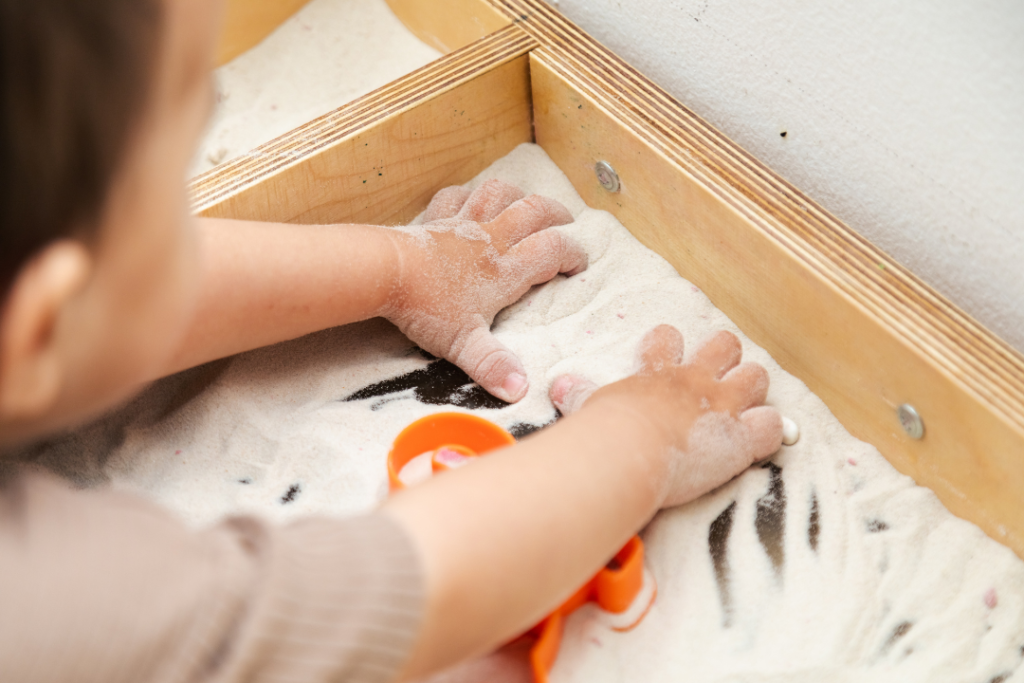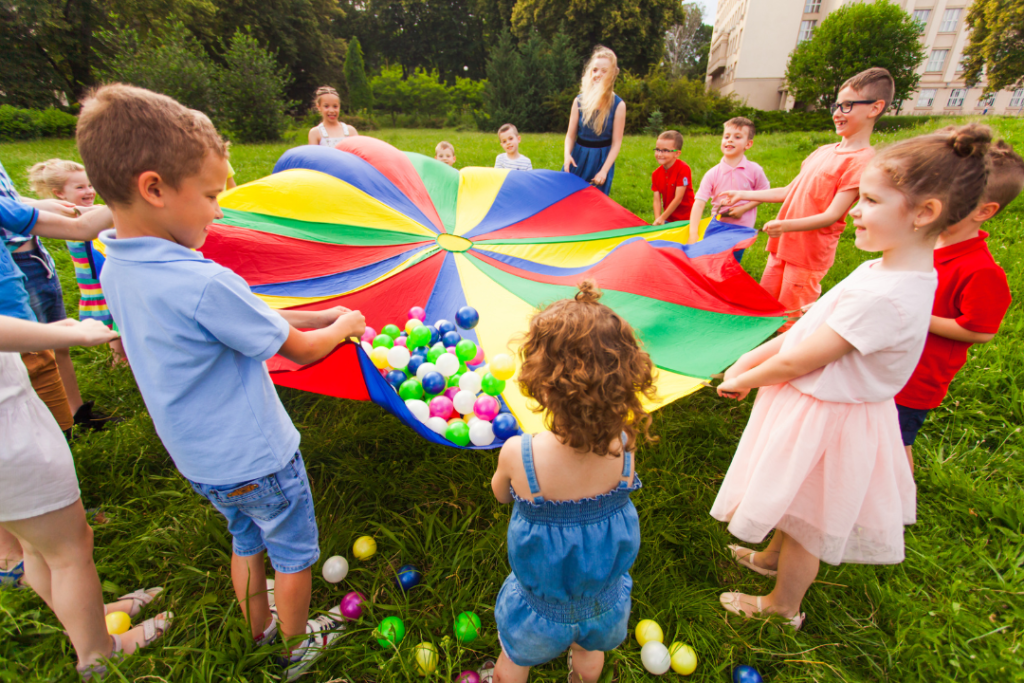It might seem surprising, but the way your body moves can significantly impact how you speak and understand language. The connection between physical movement and cognitive function is a fascinating area of research, and it’s becoming increasingly clear that getting your body moving can be a powerful tool for boosting speech and language skills.
How Do Movement Exercises Help Speech and Language Development?

If your child presents signs of Speech and Language Delay, claim your 20 minutes FREE consultation valued at $125 with our expert
The Body-Brain Connection
Our brains are wired to learn through experience.
When we move our bodies, we’re gathering sensory information that our brains process and learn from. This process, known as embodied cognition, suggests that our thoughts, feelings, and understanding of the world are shaped by our physical experiences.
So, how does this relate to speech and language?
- Sensory Integration: Movement activates our senses, especially hearing and balance. These senses are crucial for language development. As we move, our brains process the sounds around us more efficiently, laying the groundwork for better listening and speech comprehension. More on this later.
- Motor Planning: Speech is a complex motor skill. It involves planning and coordinating the movements of your lips, tongue, and jaw. Physical activities that require motor planning, like dancing or playing sports, can indirectly strengthen these skills.
- Cognitive Function: Exercise boosts brain health by increasing blood flow and stimulating the growth of new brain cells. A sharper mind is better equipped to process language, learn new words, and understand complex sentences.
- Emotional Regulation: Physical activity helps reduce stress and anxiety, which can interfere with language processing. When we’re calm and focused, we’re better able to communicate effectively.
Movement Exercises for Speech and Language
While any physical activity is beneficial, certain exercises can specifically target the skills needed for speech and language development.
- Gross Motor Activities: Jumping, running, climbing, and dancing are great for developing balance, coordination, and spatial awareness. These skills are essential for understanding language concepts like prepositions (over, under, behind) and following directions.
- Fine Motor Activities: Activities like playing with playdough, building with blocks, or drawing,cutting, beading help develop the small muscles in your hands and fingers. These muscles are also involved in speech and pronounciation.
- Oral Motor Exercises: Exercises that target the muscles used for speech, such as blowing bubbles, sucking on a thick liquid, or making different facial expressions, can improve articulation and strength.
Sensory-Based Learning
Sensory-based learning is a comprehensive approach that leverages the senses to enhance cognitive function, particularly in children with sensory processing disorders or those struggling with language comprehension. It’s based on the premise that sensory experiences can significantly influence how children perceive and process information.
How it works
- Sensory input: Activities are designed to stimulate the senses – sight, hearing, touch, taste, and smell.
- Brain activation: Sensory stimulation activates different areas of the brain, promoting neural connections and cognitive development.
- Language development: As children engage with sensory experiences, they develop language skills through observation, exploration, and communication.
Benefits of Sensory-Based Learning
- Improved attention: Sensory activities can help children focus and regulate their senses.
- Enhanced cognitive function: Stimulating the senses can boost memory, problem-solving, and creativity.
- Language development: Sensory experiences provide opportunities to learn new words, concepts, and grammar.
- Social skills: Engaging in sensory activities with others can improve social interaction and communication.
Sensory Activities
- Sensory bins: Filling containers with various materials (rice, beans, water beads, sand) for tactile exploration.
- Listening activities: Incorporating sounds and music into language learning, such as listening to nature sounds, musical instruments, or audiobooks.
- Taste and smell experiences: Introducing different flavours and aromas through foods, essential oils, or scented objects.
- Visual stimulation: Using colourful objects, pictures, and visual aids to enhance language comprehension.
- Movement activities: Engaging in activities that involve movement and balance, such as dancing, jumping, or crawling.
Tips for Parents and Educators
- Create a sensory-rich environment: Incorporate sensory elements into daily routines and playtimes.
- Observe your child: Pay attention to your child’s sensory preferences and avoid overwhelming them.
- Use language: Describe the sensory experiences to help children develop vocabulary.
- Encourage exploration: Allow children to explore and experiment with different sensory materials.
By providing rich sensory experiences, parents and educators can create a stimulating environment that supports language development and overall cognitive growth.

If your child presents signs of Speech and Language Delay, claim your 20 minutes FREE consultation valued at $125 with our expert
Visual Supports
Visual supports are powerful tools that utilise pictures, symbols, and objects to enhance language comprehension and expression. These supports can be particularly beneficial for children with language delays, autism, or learning disabilities.
How it works
- Visual representation: Images and symbols are used to represent words, concepts, and ideas.
- Communication enhancement: Visual supports facilitate communication by providing a visual anchor for language.
- Understanding: By using visuals, children can better understand and process information.
Benefits of Visual Supports
- Improved comprehension: Visuals can help children understand complex concepts and instructions.
- Increased vocabulary: Exposure to new visuals can expand a child’s vocabulary.
- Enhanced communication: Visual support can help children express their needs and wants.
- Independence: Using visuals can promote independence and self-reliance.
Visual Support Tools
- Picture communication boards: Creating boards with pictures to represent words and phrases.
- Visual schedules: Using pictures to outline daily routines and activities.
- Social stories: Creating visual stories to explain social situations and expectations.
- Symbol systems: Using standardised symbol systems, such as PECS or Boardmaker.
Tips for Parents and Educators
- Start simple: Begin with basic visuals and gradually introduce more complex ones.
- Consistency: Use visuals consistently to reinforce learning.
- Individualisation: Tailor visual support to the child’s specific needs and preferences.
- Encourage independence: Gradually reduce reliance on visuals as the child’s language skills improve.
Narrative Development
Narrative development involves the ability to understand, process, and produce stories. It’s a fundamental aspect of language development that encompasses vocabulary, grammar, sequencing, and comprehension.
How it works
- Story comprehension: Children learn to understand the plot, characters, setting, and events of a story.
- Storytelling: Children develop the ability to create and share their own stories.
- Language acquisition: Through narratives, children expand their vocabulary, learn grammar structures, and improve sentence formation.
Benefits of Narrative Development
- Improved language skills: Developing narrative skills enhances vocabulary, grammar, and syntax.
- Cognitive development: Understanding and creating stories boosts problem-solving, critical thinking, and imagination.
- Social skills: Sharing stories fosters social interaction and communication.
- Literacy development: Strong narrative skills are essential for reading comprehension and writing.
Narrative Development Activities
- Storytelling prompts: Providing open-ended prompts for children to create their own stories.
- Shared reading: Reading books together and discussing the plot, characters, and events.
- Retelling stories: Encouraging children to retell familiar stories in their own words.
- Dramatic play: Acting out stories to enhance language comprehension and expression.
- Writing stories: Supporting children in writing their own stories, even with simple drawings or dictated sentences.
Tips for Parents and Educators
- Make storytelling fun: Create a joyful and engaging atmosphere for storytelling.
- Use visuals: Incorporate pictures and props to enhance understanding and engagement.
- Ask questions: Encourage children to think critically about the story by asking questions.
- Model good storytelling: Demonstrate effective storytelling techniques.
- Provide feedback: Offer constructive feedback on children’s storytelling efforts.
By fostering a love of stories and providing opportunities for narrative development, parents and educators can significantly enhance children’s language skills and overall cognitive growth.
Music and Rhythm
Music and rhythm possess a profound influence on language development. Their rhythmic structure, melodic patterns, and auditory nature create a powerful synergy with language acquisition.
How it works
- Neural connections: Music and language share neural pathways, and engaging in musical activities strengthens these connections, enhancing language processing.
- Auditory processing: Music refines the ability to distinguish sounds, a crucial skill for language development.
- Rhythm and timing: Music develops a strong sense of rhythm and timing, which are essential for language fluency and prosody.
- Phonological awareness: Music helps children recognize and manipulate sounds in words, a foundational skill for reading and writing.
Benefits of Music and Rhythm
- Enhanced auditory processing: Improved ability to discriminate and process speech sounds.
- Improved phonological awareness: Better understanding of word structure and sounds.
- Enhanced language comprehension: Stronger ability to understand and process spoken language.
- Increased vocabulary: Exposure to new words and phrases through songs and rhymes.
- Improved memory: Music aids in memory retention of words and language patterns.
Music and Rhythm Activities
- Singing songs: Encouraging children to sing along to songs, focusing on lyrics and melody.
- Playing instruments: Exploring different instruments to develop rhythm, coordination, and auditory skills.
- Rhyming games: Engaging in rhyming activities to enhance phonological awareness.
- Music and movement: Combining music with dance and movement to improve coordination and language processing.
- Listening activities: Exposing children to different musical genres and styles to expand auditory experiences.
Tips for Parents and Educators
- Make it fun: Create a joyful and engaging musical environment.
- Incorporate music into daily routines: Sing songs during playtime, bath time, or mealtime.
- Expose children to diverse music: Introduce different genres and cultures.
- Encourage experimentation: Let children explore different musical instruments and sounds.
- Connect music to language: Discuss the lyrics and meanings of songs.

If your child presents signs of Speech and Language Delay, claim your 20 minutes FREE consultation valued at $125 with our expert
Social Interaction
Language is inherently social. It’s a tool we use to connect, share, and understand each other. Social interaction provides the rich context in which language develops and flourishes.
How it works
- Communication as a social tool: Children learn that language is a means to interact with others and get their needs met.
- Turn-taking: Social interactions teach children the back-and-forth nature of conversation.
- Pragmatics: Through social experiences, children acquire the social rules of language, such as politeness, appropriate language use, and nonverbal cues.
- Feedback: Social interaction provides opportunities for children to receive feedback on their language use, allowing for refinement.
Benefits of Social Interaction
- Improved language skills: Social interactions expose children to a wide range of language models and opportunities to practise.
- Enhanced communication: Children develop the ability to express themselves clearly and effectively.
- Stronger social bonds: Language facilitates social connections and relationships.
- Increased confidence: Successful social interactions boost self-esteem and confidence in language use.
Social Interaction Activities
- Playdates: Arranging playdates with other children to encourage language use and social skills.
- Group activities: Participating in group activities, such as storytime or music classes.
- Role-playing: Practising social interactions through role-playing scenarios.
- Conversation starters: Initiating conversations with children about their interests and experiences.
- Listening actively: Giving children your full attention when they are speaking.
Tips for Parents and Educators
- Create opportunities for social interaction: Provide a variety of social experiences.
- Model effective communication: Demonstrate clear and respectful communication.
- Encourage turn-taking: Teach children to take turns in conversations.
- Provide feedback: Offer positive reinforcement for language use.
- Be patient: Language development takes time, so be patient and supportive.
The Tomatis® Method: A Unique Approach
The Tomatis® Method is an auditory stimulation program that uses music to improve listening skills. It’s based on the principle that our ears and our bodies are interconnected. By listening to specially processed music, the Tomatis® Method is believed to improve brain function, balance, and coordination.
While the Tomatis® Method is not a physical exercise in the traditional sense, it does involve listening to music while moving. This combination of auditory and kinesthetic stimulation can be particularly beneficial for children with speech and language delays.
The Tomatis® Method leverages filtered music delivered through auditory stimulation to enhance brain and body functioning. This approach is particularly effective because the ear is deeply interconnected with both the brain and the body. The inner ear, comprising the vestibular system and the cochlea, plays a crucial role in this process:
- The Vestibular System: Essential for maintaining balance and coordinating movement.
- The Cochlea: Responsible for detecting and processing sound.
By targeting these critical components, the Tomatis® Method can significantly improve speech and language development, as well as enhance movement and coordination. This comprehensive approach fosters better articulation, communication, and socialization skills, making it a valuable tool for holistic development.
Incorporating Movement into Daily Life
You don’t need to enrol your child in a specialised program to reap the benefits of movement. Simple activities can make a big difference.
- Dance parties: Put on some music and let loose!
- Outdoor play: Encourage your child to explore the world around them.
- Sensory play: Provide opportunities for sensory experiences, like playing with water, sand, or different textures.
- Storytelling with movement: Act out stories together, using your bodies to bring the characters to life.
Remember, consistency is key. Small amounts of movement throughout the day can add up to big improvements in speech and language skills.
By understanding the connection between movement and speech, you can empower yourself to create a stimulating environment that supports your child’s language development. So, put on some music, get up and move, and watch your child’s language skills flourish!
Françoise Nicoloff
Official Representative of Tomatis® Developpement SA in Australia, Asia and South Pacific, Director of the Australian Tomatis® Method, Registered Psychologist, Certified Tomatis® Consultant Senior, Tomatis® International Trainer and Speaker, Co-author of the Listening Journey Series, 45 Years of Experience, Neurodiversity Speaker


